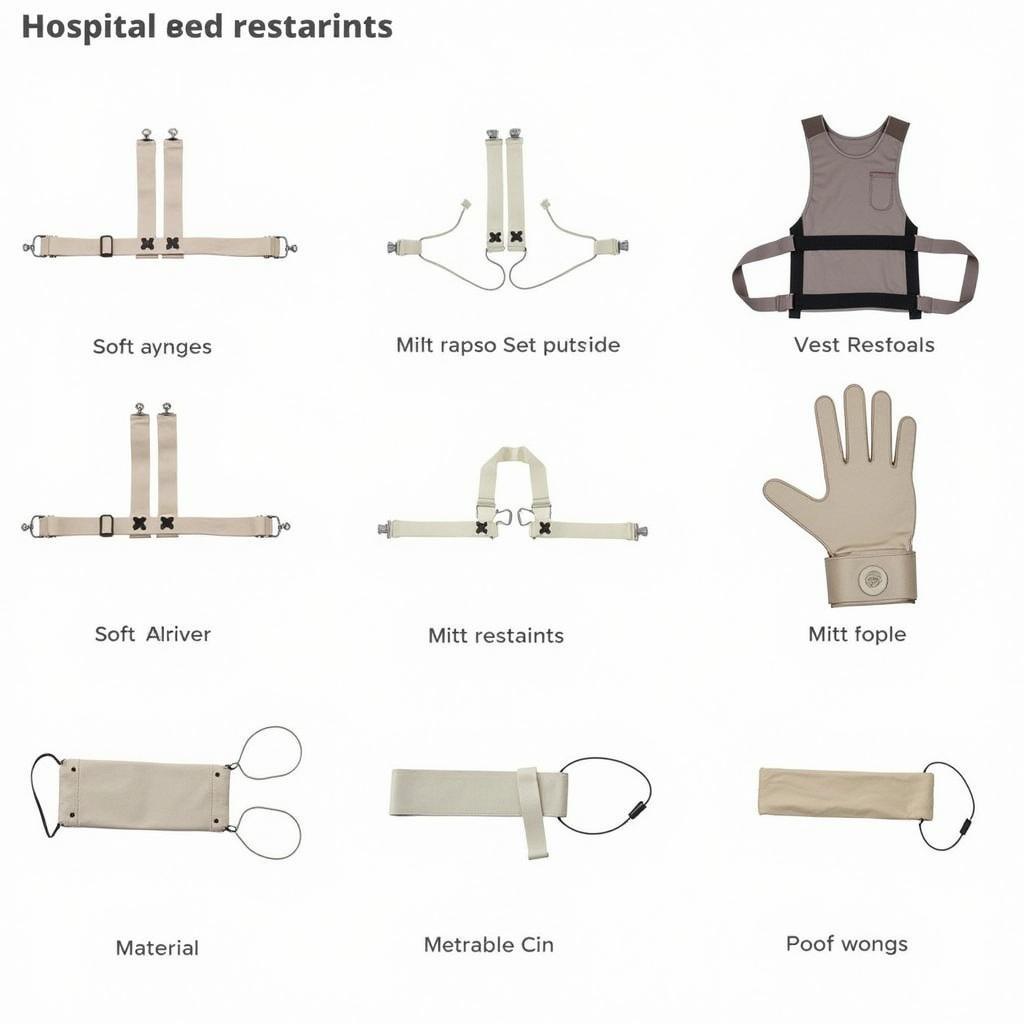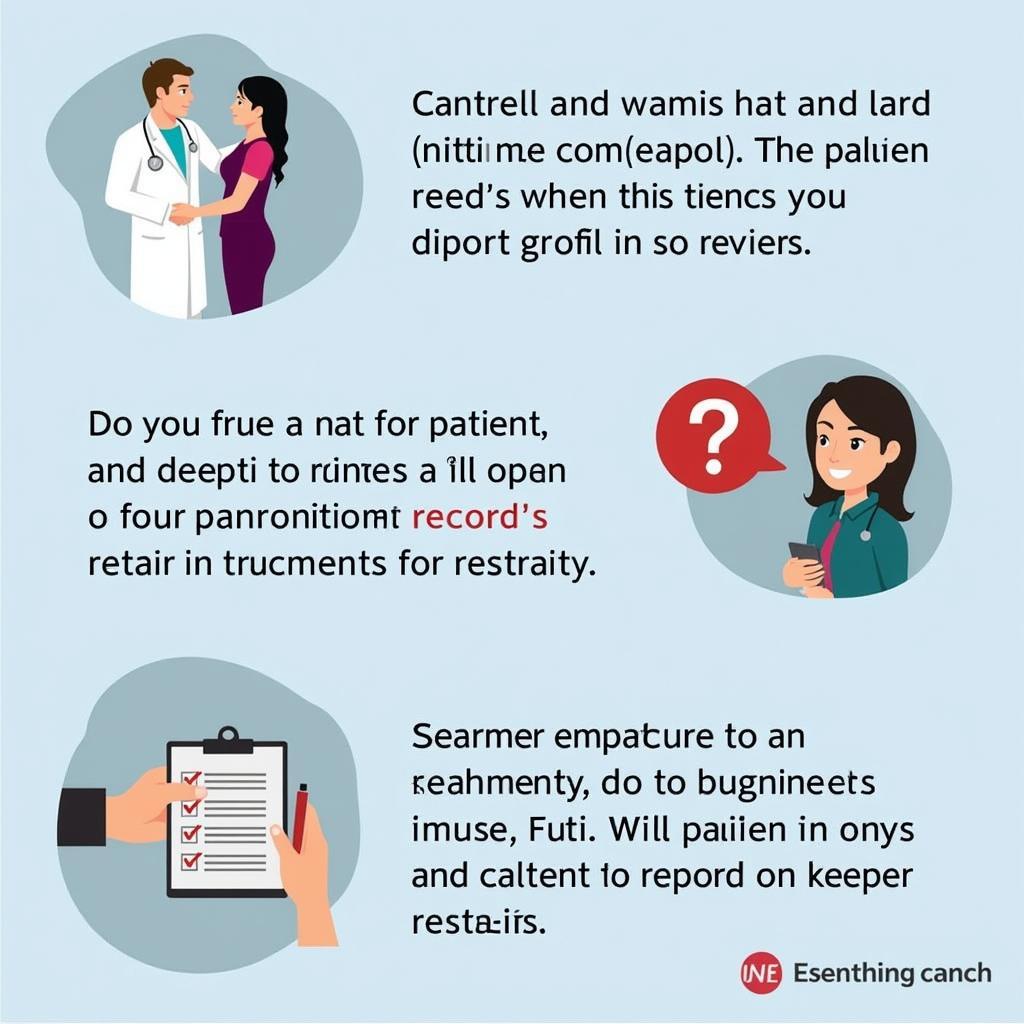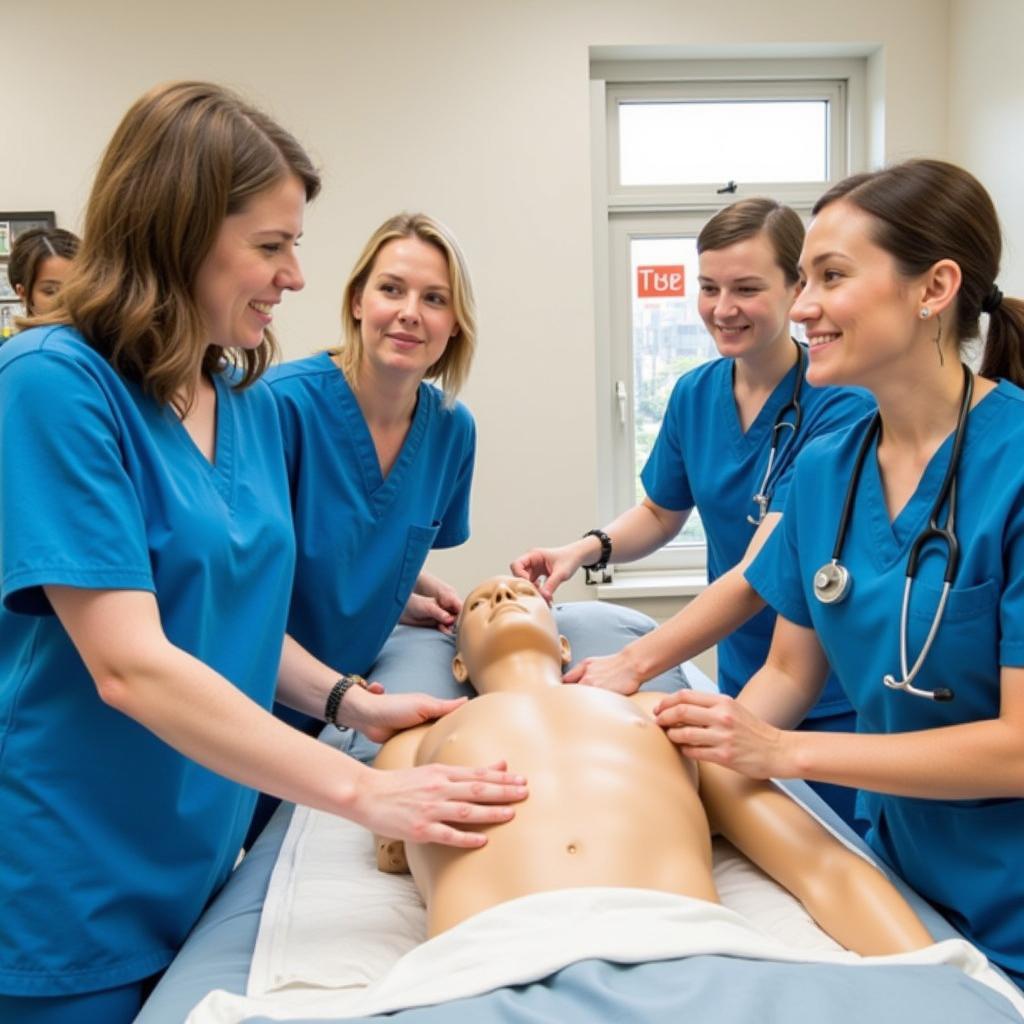Hospital Bed Restraint is a complex issue that requires careful consideration. It involves limiting a patient’s movement in bed to ensure their safety and well-being. This article will delve into the different aspects of hospital bed restraint, from its purpose and types to the ethical considerations and best practices.
The Purpose of Hospital Bed Restraints
Hospital bed restraints are used primarily to prevent patients from harming themselves or others. This can include patients who are confused, agitated, or experiencing delirium. Restraints can also be used to facilitate medical treatment, such as preventing a patient from pulling out IV lines or interfering with wound care. It’s crucial to remember that restraints should only be used as a last resort after less restrictive interventions have been tried and documented as unsuccessful. After less restrictive interventions have been attempted, a physician’s order is required for restraint use. You can learn more about policies regarding restraints at restraint policy in hospital.
 Different Types of Hospital Bed Restraints
Different Types of Hospital Bed Restraints
Types of Hospital Bed Restraints
Several types of restraints exist, each designed for specific situations. These include wrist restraints, vest restraints, mitt restraints, and bed rails. Hospital wrist restraints are often used to prevent patients from pulling out IVs or scratching themselves. Vest restraints limit upper body movement, while mitt restraints prevent patients from grabbing objects or scratching. Bed rails, while sometimes considered restraints, can also be used to assist with mobility and prevent falls. The specific type of restraint used depends on the individual patient’s needs and the reason for restraint. Choosing the right restraint is essential for maximizing patient safety and comfort.
Ethical Considerations and Best Practices
The use of restraints raises several ethical concerns. Patients have the right to autonomy and freedom from unnecessary restrictions. Therefore, restraints should only be used when absolutely necessary and for the shortest possible duration. Regular assessments are crucial to ensure the patient’s well-being and to determine if the restraints are still needed. Proper documentation is also essential, including the reason for restraint, the type of restraint used, and the duration of restraint.
 Ethical Considerations for Hospital Bed Restraints
Ethical Considerations for Hospital Bed Restraints
“Restraints are a last resort, not a first option. We always prioritize patient safety and dignity,” says Dr. Emily Carter, Chief of Patient Safety at San Jose Hospital.
Alternatives to Restraints
Before resorting to restraints, healthcare providers should explore alternative strategies. These can include providing a calm and quiet environment, offering frequent reorientation, engaging the patient in activities, and involving family members in the patient’s care. For patients at risk of falls, consider a hospital enclosure bed as a less restrictive alternative. These interventions can often be effective in managing challenging behaviors and reducing the need for restraints.
Hospital Bed Restraint Training
Proper training for healthcare staff is crucial for the safe and ethical use of restraints. Staff should be trained on the proper application and removal of restraints, as well as how to monitor patients who are restrained. They should also be educated on the potential risks of restraints, including skin breakdown, pressure sores, and psychological distress. “Effective training ensures our staff understands the importance of using restraints judiciously and with compassion,” adds Dr. Michael Davis, Director of Nursing at San Jose Hospital. You may be interested in exploring bed restraints hospital for more information on this subject.
 Hospital Staff Training on Bed Restraints
Hospital Staff Training on Bed Restraints
Conclusion
Hospital bed restraint is a necessary intervention in certain situations, but it must be used responsibly and ethically. By adhering to best practices, prioritizing patient well-being, and exploring alternative strategies, healthcare providers can ensure the safe and dignified care of their patients. Remember, the goal is always to minimize the use of restraints while maximizing patient safety.
FAQs
- What are the risks of using hospital bed restraints?
- How often should a restrained patient be checked?
- Are there alternatives to using restraints?
- Who can authorize the use of restraints?
- What type of training is required for staff using restraints?
- How can family members support a patient in restraints?
- What are the legal implications of using restraints inappropriately?
When needing assistance, please contact us: Phone Number: 02437655121, Email: [email protected] Or visit us at: No. 298 Cau Dien Street, Minh Khai, Bac Tu Liem, Hanoi, Vietnam. We have a 24/7 customer service team.